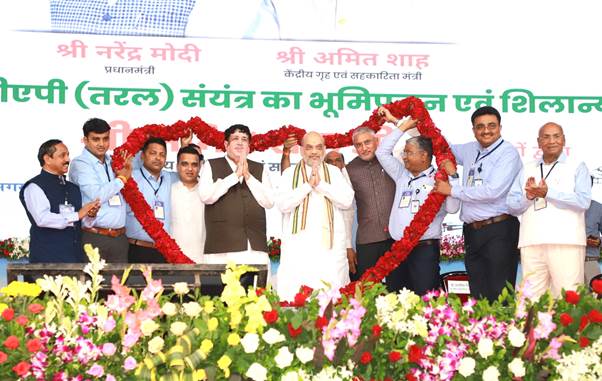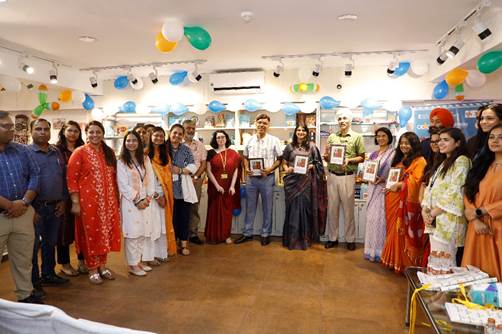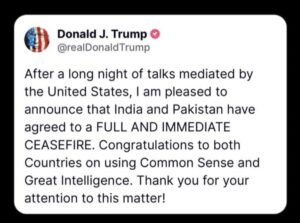|
Digital Transactions in India
|
|
|
|
Government of India is committed to expand digital
transactions in the Indian economy, and thereby enhance the quality and
strength of the financial sector, as well as ease of living for
citizens. Digital payment transactions have significantly increased as
a result of coordinated efforts of the Government as a whole, along with all
stake holders concerned, from 2,071 crore transactions in FY 2017-18 to 8,840
crore transactions in FY 2021-22 (Source: RBI, NPCI and banks).
|
|
During last five years, various easy and convenient modes of
digital payments, including Bharat Interface for Money-Unified Payments
Interface (BHIM-UPI), Immediate Payment Service (IMPS), and National
Electronic Toll Collection (NETC) have registered substantial growth and have
transformed digital payment ecosystem by increasing person-to-person (P2P) as
well as person-to-merchant (P2M) payments. BHIM UPI has emerged as the
preferred payment mode of the citizens and has recorded 803.6 crore digital
payment transactions with the value of ₹ 12.98 lakh crore in January 2023.
|
|
The total number of digital payment transactions undertaken
during the last five financial years and the current financial year are as
under:
|
|
Financial Year
|
Total number of digital transactions
|
|
(FY)
|
(in crore) #
|
|
2017-18
|
2,071
|
|
2018-19
|
3,134
|
|
2019-20
|
4,572
|
|
2020-21
|
5,554
|
|
2021-22
|
8,840
|
|
2022-23
|
9,192*
|
|
* Data till 31st December2022
|
|
# Note: Digital payment modes considered are BHIM-UPI, IMPS,
NACH, AePS, NETC, debit cards, credit cards, NEFT, RTGS, PPI and others.
|
|
Source: RBI, NPCI and banks
|
|
The total value of digital payments during the last five
financial year and in the current financial year are as under:
|
|
Financial Year
|
Total value of digital transactions
|
|
(FY)
|
(in lakh crore) #
|
|
2017-18
|
1,962
|
|
2018-19
|
2,482
|
|
2019-20
|
2,953
|
|
2020-21
|
3,000
|
|
2021-22
|
3,021
|
|
2022-23
|
2,050*
|
|
*Data till 31st December2022
|
|
# Note: Digital payment modes considered are BHIM-UPI, IMPS,
NACH, AePS, NETC, debit cards, credit cards, NEFT, RTGS, PPI and others.
|
|
Source: RBI, NPCI and Banks
|
|
Growth of Digital Payments in India and availability of
various easy and convenient digital payment solutions have facilitated ease
of living for citizens, financial inclusion, and growth of business and
economy. During the Pandemic, availability of contactless digital payment
solutions such as BHIM-UPI facilitated social distancing and continuity of
businesses, including small merchants. The benefits of using digital payments are as follows:
|
|
Instant and convenient mode of payment: Unlike cash, money can be instantaneously
transferred to the beneficiary account using digital modes like BHIM-UPI and
IMPS. Moreover, using the BHIM-UPI mode, one can effect a digital transaction
via mobile phone using mobile number or easy-to-remember virtual payment
address (email-like address). BHIM-UPI has enabled access to multiple Bank
accounts in a single mobile app, facilitating ease of payments.
|
|
Enhanced financial inclusion: Digital payments offer anytime, anywhere access to accounts,
thus making it easy for citizens to receive payments in their accounts and to
also make payments using their phone. People who may have been deterred by
the time, and travelling cost involved in physically accessing a bank outlet
for transactions can now conveniently access the bank account digitally and
get various benefits of being part of the formal banking system and becoming
financially included. Recently launched UPI 123PAYenables feature phone users
to make digital transactions through UPI in assisted voice mode, facilitating
digital transactions and financial inclusion in rural areas.
|
|
Increased transparency in government system: Earlier cash payments were subject to
“leakage” (payments that do not reach the recipient in full) and “ghost”
(fake) recipients, particularly in the context of social security benefits by
government transfers. Now, benefits are directly transferred to target
beneficiary (direct benefit transfer) account through digital modes of
payments.
|
|
Improved speed and timely delivery: In contrast to a cash payment that
travels at the speed of its carrier, digital payments can be virtually
instantaneous, regardless of whether the sender and receiver are in the same
town, district or country.
|
|
National Electronic Toll Collection (NETC) system: NETC system enables the customer to make
electronic payments at NETC-enabled toll plazas on the highway without
stopping at the toll, using Radio Frequency Identification technology.
|
|
Bharat Bill Payment System: Bharat Bill Payment System (BBPS) provides an
interoperable and easily accessible bill payment service to consumers via
multiple channels like Internet banking, mobile banking, mobile apps,
BHIM-UPI etc. Citizens can make easy bill payments anytime, anywhere
through BBPS.
|
|
Enhanced Credit Access: Unlike cash payments, digital payments automatically
establish a user’s financial footprint, thereby increasing access to formal
financial services, including credit. Banks and other lending institutions
can utilise digital transaction histories to take cashflow-based lending
decisions for both retail lending and lending to businesses, including small
businesses who may face difficulty in getting credit in the absence of
verifiable cashflows.
|
|
Safe and secure: Recipients of cash payments not only often have to travel
considerable distances to receive their payments but are also particularly
vulnerable to theft. Digital payments across India are secure as multiple
levels of authentication are required for making transactions.
|
|
This information was given by the Minister of State for
Electronics and Information Technology, Shri Rajeev Chandrasekhar in a
written reply to a question in Lok Sabha today.
|

INDIANNAVYPARTICIPATESINBILATERALNAVALMARITIMEPARTNERSHIPEXERCISEWITHUAENAVYQ0L1.jpeg)






